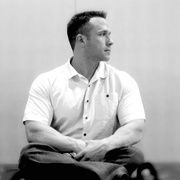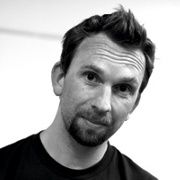Big question: how do you handle project management?
Andy Rutledge recently argued that project managers often do more harm than good. We asked our expert panel what the role of a project manager should be.
Read Andy Rutledge's original article here. Also see our tips for project management.

Jonathan Smiley
Designer
www.zurb.com
At ZURB we don't have any project managers – design leads run the project with the client, as well as guiding the design process on our end and participating in the actual client work. It's easy when we have a more ... challenging client to wish that a project manager was there to jump in and take the heat, but I can't imagine actually working with that kind of set-up. It’s much better to have designers at every level of a client project.
Jonathan is a design lead at ZURB

Trent Walton
Founder of Paravel
www.paravelinc.com
At Paravel we've never expanded beyond our three-man team, so we're managing everything ourselves. Over the years I think we've braided project management into the rest of our workflow to the extent that we don't feel much role-switching stress. Rather than going from PM to designer to coder, we're just doing the job – and thinking about things like client collaboration and timelines is just part of it.
Trent is founder of Paravel

Shane Mielke
Creative director
shanemielke.com
Project managers exist to help manage clients, deadlines, communication and projects in general. While their experience and opinions as users are definitely valid for things like usability, project scope & content, you have to be careful of how much personal influence they have in specialised areas such as the art direction of a project. The three worst project management scenarios I've experienced are:
1: Project managers who attempt to micromanage or change the design style of a site from the designer or client's vision simply because it's not to their taste.
2: Project managers who rush the design process, attempting to change or minimise design time to meet a non-relevant soft deadline or premature request by a client eager to see first designs.
3: Project managers who become too friendly with the client and actually start pushing for changes, additions and things that negatively affect the goals, quality, profitability and best interest of the team they're on.
Shane is designer and creative director at 2Advanced

Aaron Gustafson
Principal
easy-designs.net
Based on his article, I think it’s clear Andy has not worked with a great project manager before. While I wholeheartedly agree that designers should always present designs directly to clients and be able to speak intelligently about their work, I’m unsure about Andy's understanding of what a project manager actually does … a lot of the roles and responsibilities he thinks should fall to the project manager are really best handled by an account manager (assuming the agency in question is big enough to support one), and some allocated to a designer, really should be the purview of a project manager.
Frankly, as both a business owner and someone who does production
work, I find a good project manager invaluable. Here’s why:
1: I suck at scheduling: when I tried to project manage my own work, I was an epic failure. Having a proper project manager frees me up to focus on the big picture of the projects and also enables me to focus on the work I need to be doing. My project manager keeps me focused on what I should be doing, as opposed to what I want to be doing.
2: A good project manager facilitates and streamlines communication between the production team and the client. He or she makes sure meetings stay on topic and run smoothly, is mindful of the production schedule and scope and, when things go sour, is often the one who takes one for the team or is shouldered with the responsibility of delivering bad news to the client. A project manager does not insert herself in between a client and a designer or developer unless absolutely necessary (when it’s coming to blows).
3: I can’t spend all day on email. My project manager is the primary client contact for all incoming and outbound emails, which is not to say others on our team don't get messages. It is simply more efficient for her to filter client requests, answering those she can and approaching the appropriate team member to get answers she needs. She also keeps the client updated on project status and handles setting up meeting times and so on, while always making sure our work days aren’t entirely consumed by meetings. If I, or our designers, had to address all of the messages from our clients, one of three things would happen: 1) we would never get production work done, or it would take twice as long; 2) we would be working 12 hour days; or 3) we wouldn't be able to be nearly as responsive to our clients, which would make them feel less confident in us and their project. None of these is an acceptable outcome for our business.
4: A good project manager establishes and oversees the scope of a project. He or she does not do this in a vacuum, but instead involves every team member in research and discovery meetings as well as budget, scope, and scheduling discussions.
Project managers are key to the success of our projects, and I wouldn't have it any other way.
Aaron is principal at Easy! Designs

Louis Balogun
Production manager, Reading Room
www.readingroom.com
Good project management is centred around two intertwining themes: people and process.
First, hiring the right people to manage projects is crucial. Quite rightly this is often done based on experience. But when hiring project managers, the most important thing to look for is passion.
This passion enables the project manager to deliver a successful project and achieve a sense of ownership of the project team. They’ll be able to adopt a clear communication strategy to agree deliverables and enable the effective management of stakeholders and their expectations.
Second, the facilitation of process is key. The main reason projects go wrong is a lack of process and communication; these hold everything together. If you get the process right from the beginning, the project will be simpler to manage throughout the delivery.
No matter how large or small the project may be, a clear client communication strategy should be followed. Email updates, weekly reports and face-to-face meetings are standard, ensuring all stakeholders feel involved and giving the project manager the opportunity to manage expectations with no nasty surprises.
Equally important is managing the communication channels of the internal team. Projects often go wrong if this internal process isn’t managed and dramatically affects the wider team’s ability to work together to generate ideas and solve problems. Of course, by this time you’ve already allocated the right team to the client’s project – it’s important from the outset to have the right mix of personalities, skills and experience to deliver the best possible solution.
A common mistake is to have the project manager own every stage of the delivery. Designers and developers perform at their best when they take ownership of their work, being heavily involved from the outset and not buffered from the client by the project manager. The project manager’s role here is to co-ordinate effective teamwork, spotting problems early and ensuring the team isn’t in fact a group of disparate individuals working towards different goals. They’ll know their team’s strengths and weaknesses, being able to fully utilise the experience they have and therefore provide a far more consultative approach to client management as well as ensuring a thorough understanding of the ultimate goals of the project within the team.
So, a project manager is a facilitator and administrator? Correct. But they’re also a diplomat, an owner, a chairperson and advocate for exceeding expectations. They need to motivate and maximise involvement from the project team and get the right input from stakeholders. Good project managers share knowledge, get to the root of understanding their client’s problems and the deliverables required to solve them and of course are adept to manage time, resource and administrative documentation. None of this can be achieved without a clear process that all involved adhere and buy into.
Louis is Production Manager at Reading Room

Robert Mills
Studio manager
bluegg.co.uk
As a studio manager I manage projects and clients every day. We have our internal bespoke PM system to keep on top of all activity (we have an average of 40 projects on the go at any given time across web, branding and print), and we use Harvest to track our time and manage budgets.
PM often gets overcomplicated. It's simply about open and honest communication and managing expectations. I handle the admin side of projects including budgets, timescales, deadlines and content but our designers and developers don't hide behind me. They speak direct to the client for feedback and to explain ideas. In that sense PM at Bluegg is a collaborative process. Our morning catchups keep us all aware of what's happening in the studio and I’m included in all conversations to keep an eye on deadlines and budgets.
When projects have faced difficulty it is usually down to scope creep and/or poor communication, so we agree all scope up front as well as deliverables for both sides and deadlines for these. It's about planning. I don't think you can say PMs do more harm than good so long as roles are defined and there isn't a case of ‘too many cooks’.
Rob Mills is studio manager of creative agency Bluegg
Get the Creative Bloq Newsletter
Daily design news, reviews, how-tos and more, as picked by the editors.

James Chudley
UX director, cxpartners
Co-author of Smashing UX Design
www.cxpartners.co.uk
The best project managers deal with issues that allow the designers and developers to focus on what they do best. They are in complete control of project progress and profitability, they organise stuff for you, keep in control when it gets crazy, plan ahead and don't get in the way. Most importantly they don't try to get involved with making design decisions or act as a middleman between production and the client.
James is UX director at CX Partners

Gavin Elliott
Founder of Industry Conference
industryconf.com
Project management goes really well when there is a full-time PM who has a good background in both design and development cycles. With a wide variety of types of project management and how to go about it, project management isn't a one-size-fits all and there's definitely no one app that’s a Holy Grail. You have to analyse how you want to work and find your best way there, and the whole team/company has to be with you otherwise it all ends in failure eventually.
Gavin is the founder of Industry Conference

Inayaili de Leon
Web designer
canonical.com
For me, a good project manager is someone who makes my life as a designer easier without interfering with the decisions that are for me to make, and the steps that are for me to take. Whereas it's my job to keep in my head considerations about the project's brand, design direction, user needs, web standards, new technologies and so on, I work better when someone else carries in their head the details about exactly who's suppose to deliver what on each day, how to best manage all the resources we have, and keep distractions at bay. I think it's hard for people to not have a say about the work I do, and I don't think we should be offended when someone has an opinion. But it's my job to establish who the design professional is throughout the projects I'm working on.
Inayaili is a web designer at Canonical

Aral Balkan
Experience designer
www.aralbalkan.com
The role of project manager is an artificial one. If you’re working with an agile methodology such as Extreme Programming, the project management responsibilities are shared between members of the team (making them better invested in the process and removing a potentially adversarial relationship) and the coach. So the closest thing to a project manager in an agile process is the coach. The difference, of course, is that the coach usually knows what she is talking about and is respected by the team. Too harsh? Sorry, there are reasons I don't work within traditional organisational structures. One thing I can tell you: you can tell a lot about the health of an organisation by the ratio of its project managers to developers and designers. The higher the ratio of project managers, the more fucked up the organisation is.
Aral is a designer, developer, professional speaker, teacher, and author of the Feathers iPhone app

Dan Mall
Design director
superfriend.ly
I've had the pleasure of working with some great project managers. Great project managers go out of their way to make the other team members' jobs easier. They also have enough of an understanding of each part of the process that they can push each team member to do better when appropriate.
Bad project managers try to do too much. They don't quite know where the boundaries of their responsibilities lie and often inappropriately make assumptions on behalf of the team. Bad project managers try to do everything on their own.
I see the role of a project manager as a traffic cop. Projects are often chaotic without a good project manager to create the right kind of order. She's responsible for making sure the right conversations take place when they should between the right people. She knows when certain people need to stop and when others need to go. She's the crucial piece that can take a huge mess and turn it into a beautiful system.
Dan is the founder and design director of SuperFriendly

Matt Cook
Freelance project manager
www.mattecook.com
Project managers often cause more harm than good. I work independently as a freelance project manager for exactly that reason.
I think project managers tend to take roles that they shouldn't for multiple reasons: the project is dragging, team leads are unavailable, budget is running out – you name it. The pressure to control variables that destroy projects can turn them into power-sucking monsters. I'm hearing Harvey Dent right now: "You either die a hero or live long enough to see yourself become the villain". A wise friend once summed up an experience by saying that as a PM if a project fails, it's his fault; if it succeeds it's the team's success. Sometimes that means as project managers we have to be "the hero that [the team] deserves, but not the one [they] need right now". I hope you're catching all of the superhero references. PM's should be exactly that, superheroes.
At SuperFriendly we've structured project management to defeat apathy and the forces of evil. Conventional project management puts up barriers, resists nonconformity, and strains the creative process. I think almost every designer can relate to the ‘swoop-and-poop’. A PM swoops in, tosses out several minutes of earth shattering changes or constraints, and then flies off to some meeting. The project team has clean up the mess and carry on. This tends to happen when dollars are king and PMs are inept at controlling and foreseeing problems. There is an ever-present pressure to supply a service or product for the most amount of money in the least amount of time. The result is usually mediocrity. What a team really needs is the project's ultimate advocate.
I put the project first and I don't BS anyone. I make it very clear to all stakeholders that I advocate each project I put my name to. I have what feels like a million little things I do to keep that a reality, but it can be boiled down to several simple principles. Fight for quality, stand up for the team, tell the truth, and put on my cape – being willing to pay the ultimate price to save the project. Living by this code keeps me from manipulating, shifting blame, caving for extra margin, failing to plan, or being a miserable person to work with. I facilitate, I don't mandate. I converse, I don't coerce. I hope for the best and plan for the worst.
Take one of my recent projects for example. The client needed a ton of work but we knew they wouldn't be keen on how much it would cost. I spent two weeks building their trust in my team, drawing up schedules and deliverables, and figuring pricing to make sure I'd hit a margin. I made it clear to the client that I wouldn't bid to their budget and told them the exact truth about what we could do and why they needed us. We won the job. Since then we've kicked off, pivoted for their needs, planned to our strengths, told them the difficult truths about their current performance, and made extra trips to visit; all while we've maintained their trust and our ability to meet deadlines while augmenting the project to fit their exact needs. We're not sticking them on details and we're not cheapening our work. We've worked to facilitate their needs within the constraints that we set together. It doesn't always happen this way, but when things do get ugly, clients know exactly where I stand: right beside the project, fighting to maintain success.
Project management is rife with problems because the opportunity to be a bad human for the sake of earning some extra dollars is ever present. Ultimately, a PM needs to be a solid person. It's not impossible, but it's sometimes hard. My advice is to work hard, stand up for the project, and wear a cape (sometimes).
Matt is a freelance project manager working with Dan Mall

Rob Walker
Managing director
xcitedigital.com
At the start of a project we ask everyone for their own estimation for their work, then we double it. We also ask the client for everything we need to complete the project; if they don’t provide it we bite the bullet and do it ourselves. Most agencies take the opinion that nothing happens until the client provides something, which is wrong, very wrong. We just get on and do what we should be doing, completing the project as best we can, even if it’s guesswork so the client can see something and can then make amends.
The single most common failure is down to the agency having to over deliver because the project was mis-specced, which means the project costs them more money to deliver. If this keeps happening the agency stops work, blaming the client for not explaining properly. The client blames the agency for not doing their job properly. It's a difficult place to be: someone has to bite the bullet and get on with it. To be fair this should be the agency because they are the experts. The solution is be flexible, manage expectations tightly from the outset, and not be afraid to say no to something that is not included in the project. It helps to have a good change-management procedure that everyone understands. If there is a change then this will affect the delivery.
Most other frames of mind on why the web development industry is so broken are because some agencies build from scratch – which is pointless when there are so many good pre-built systems available. Couple this with a general naivety from consumers on how complex web development projects actually are, and you have a recipe for disaster. The client wants to pay the minimum, but the agency wants to win the work so offers a lower cost. When the project takes longer someone is losing out financially. The solution is to take on projects that are highly suitable to you, and only, ONLY do those projects, no matter how great the appeal of winning new work is. A lot of agencies seem to forget that revenue is not actually profit.
The role of a project manager is to communicate daily with the account manager to make sure everything is on track, and everyone has what they need to do their job.
When hiring project managers, we look for the following qualities:
- Confidence.
- The ability to say what they see, and be able to say no to a client (in the best possible sense).
- To motivate the team to hit targets.
- To communicate all the time.
- To be quick and efficient, not labouring on areas that are not important – in other words, not being a busy fool.
- Personable and not over bearing.
- To build confidence with the client even when things are not going perfectly.
Rob is managing director at Xcite Digital

James Bates
Creative Director
www.clearleft.com
One of the main reasons we only hire senior-level people at Clearleft is the importance we place on them being able to manage their own projects. Good design is all about collaboration and having a good relationship with the client is key. Over-zealous project management can often add friction to this process.
That's said, we do have project managers, but they sit across all our projects and take a more hands-off approach. They're really only there to facilitate —not get in the way of— design activities.
The interesting challenge is that as you take on larger, more strategic projects the boundaries between design and project management can blur and it's easy to get caught up doing activities that don't completely fall into the realm of 'design'. How you handle this is something we're still working out, but it largely depends on the client and the experience of the individuals involved.
James is creative director at Clearleft

Andy Budd
Managing director
www.clearleft.com
A lot of project managers are used as a buffer between a team of ever changing freelancers and junior designers, not trusted by their employers to speak directly to clients. So I can understand why many designers have a negative experience of working in overly controlling environments. However that doesn't mean that all projects managers are bad. In fact I'd say a good project manager is worth their weight in gold.
As your readers know, we only hire senior practitioners and encourage them to work very closely with our clients. As such, they take on many of the traditional project management roles, including that of project leadership. So instead of running the project, our projects managers provide support to both the client and the project team, removing friction and helping the team achieve their goals. This could be anything from helping with logistics through to complex business negotiations around scope or price.
Andy is a founder and managing director of Clearleft
Discover the top 10 online web design training tools at Creative Bloq.

Thank you for reading 5 articles this month* Join now for unlimited access
Enjoy your first month for just £1 / $1 / €1
*Read 5 free articles per month without a subscription

Join now for unlimited access
Try first month for just £1 / $1 / €1
The Creative Bloq team is made up of a group of design fans, and has changed and evolved since Creative Bloq began back in 2012. The current website team consists of eight full-time members of staff: Editor Georgia Coggan, Deputy Editor Rosie Hilder, Ecommerce Editor Beren Neale, Senior News Editor Daniel Piper, Editor, Digital Art and 3D Ian Dean, Tech Reviews Editor Erlingur Einarsson and Ecommerce Writer Beth Nicholls and Staff Writer Natalie Fear, as well as a roster of freelancers from around the world. The 3D World and ImagineFX magazine teams also pitch in, ensuring that content from 3D World and ImagineFX is represented on Creative Bloq.
